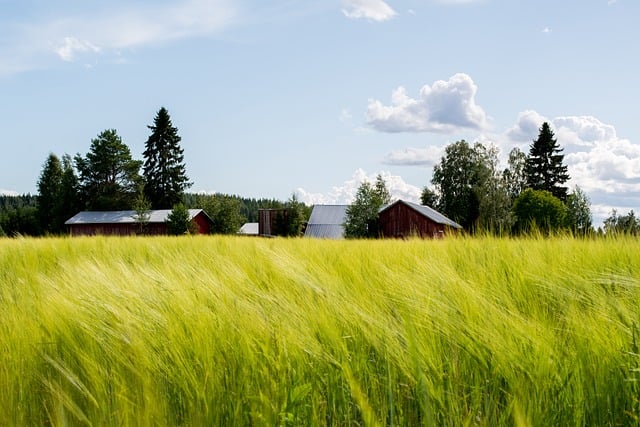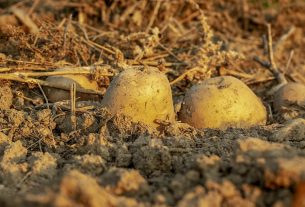Imagine a farmer watching his crops struggle, despite pouring on the fertilizer. It’s like giving a patient medicine without knowing what’s wrong. You can fix this by looking into the soil. Soil testing is the key to unlocking better crop yields and saving money on fertilizer. It’s the first step toward a healthier farm and a more profitable harvest.
Why Soil Testing is Essential for Modern Farming
Why is soil testing so important? It’s all about understanding what your soil needs. Testing gives you an insider’s look at what’s going on below the surface. It helps you make smart choices that can boost your farm’s success.
Understanding Soil Composition
Soil is made of sand, silt, clay, and organic matter. Each part plays a role in how well plants grow. For instance, sandy soil drains quickly but does not hold nutrients well. Clay soil holds water but can be hard for roots to push through. Knowing what your soil is made of helps you choose the right fertilizers and farming methods.
Identifying Nutrient Deficiencies and Excesses
Soil tests point out what nutrients are missing or too high in your soil. Plants need different nutrients to grow big and strong. If your soil is low in a key nutrient, your plants won’t thrive. Too much of one nutrient can also cause problems. Soil tests help you balance things out, ensuring your plants get just what they need.
Optimizing Fertilizer Use and Reducing Waste
Using too much fertilizer wastes money and can harm the environment. Soil testing shows you exactly how much fertilizer your crops need. This means you use less fertilizer and still get great results. This saves you money and keeps our land and water clean.
How to Conduct a Soil Test: A Step-by-Step Guide
Testing your soil isn’t hard. It just takes a few steps to get it right.
Soil Sampling Techniques: Getting Representative Samples
To begin, gather soil samples from different spots in your field. Take samples from about six to eight inches deep. Mix them to get a good idea of what’s going on in that field. It is best to test your soil at the same time each year.
Choosing the Right Soil Testing Lab
Find a soil testing lab that is certified. Look for labs that offer the tests you need. Think about how fast they can get you the results. Cost can also affect your decision.
Understanding Your Soil Test Report
Soil test reports can seem confusing, but they’re not so bad once you know what to look for. These reports will show pH levels, nitrogen, phosphorus, potassium, and other key details. The report helps you understand what your soil needs to produce healthy crops.
Decoding Your Soil Test Results: What Do They Mean?
Knowing how to read your soil test results is key to a good harvest. Let’s break it down.
Interpreting pH Levels and Their Impact on Nutrient Availability
Soil pH affects how well plants can take up nutrients. Most plants like a pH between 6 and 7. If your soil is too acidic (low pH), you might add lime. If it’s too alkaline (high pH), sulfur can help. Adjusting your soil’s pH is a simple step that can make a big difference.
Understanding Nitrogen, Phosphorus, and Potassium (NPK) Levels
Nitrogen (N) helps plants grow green and leafy. Phosphorus (P) is key for strong roots. Potassium (K) helps with overall plant health. Soil tests tell you how much of each you have. If levels are low, you’ll need to add fertilizer.
Micronutrient Analysis: Identifying Hidden Deficiencies
Besides NPK, plants need small amounts of other nutrients, like iron, zinc, and manganese. These are micronutrients. Deficiencies here can limit growth. Soil tests can find these hidden problems, too.
Developing a Customized Fertilizer Plan Based on Soil Test Results
Now that you know what your soil needs, how do you make a fertilizer plan? It’s about matching the right fertilizer to your crop’s needs.
Calculating Fertilizer Rates Based on Crop Needs and Soil Nutrient Levels
Look at your soil test results and think about what your crop needs. Your local extension office can give you tips for calculating how much fertilizer to use.
Choosing the Right Fertilizer Type: Matching Nutrients to Crop Requirements
You can choose from organic or synthetic fertilizers. Pick the type that fits your soil and crop. Granular fertilizers are slow-releasing. Liquid fertilizers work quickly.
Implementing Precision Agriculture Techniques for Targeted Fertilizer Application
Precision agriculture uses tech to apply fertilizer only where needed. Variable-rate application uses GPS to adjust fertilizer rates across the field. This saves money and reduces environmental impact.
Benefits and Long-Term Impact of Soil Testing
Soil testing has many benefits that reach beyond a single harvest. It is about making your farm stronger and healthier for years to come.
Increased Crop Yields and Improved Crop Quality
By giving your plants the right nutrients, you’ll see more crops. You’ll also see higher quality produce. Healthy soil leads to healthy, bountiful harvests.
Reduced Fertilizer Costs and Environmental Impact
Using less fertilizer saves you money. It also helps protect our environment. Less fertilizer runoff means cleaner water and healthier ecosystems.
Sustainable Farming Practices and Long-Term Soil Health
Soil testing supports sustainable farming. It helps you maintain healthy soil for future generations. By taking care of your soil, you’re investing in the long-term success of your farm.
Conclusion
Soil testing is the first step to better crop yields and smarter fertilizer use. It gives you the insights you need to feed your crops right, save money, and protect the environment. Take control of your soil’s health, test your soil. Start planning for a healthier and more profitable future.



